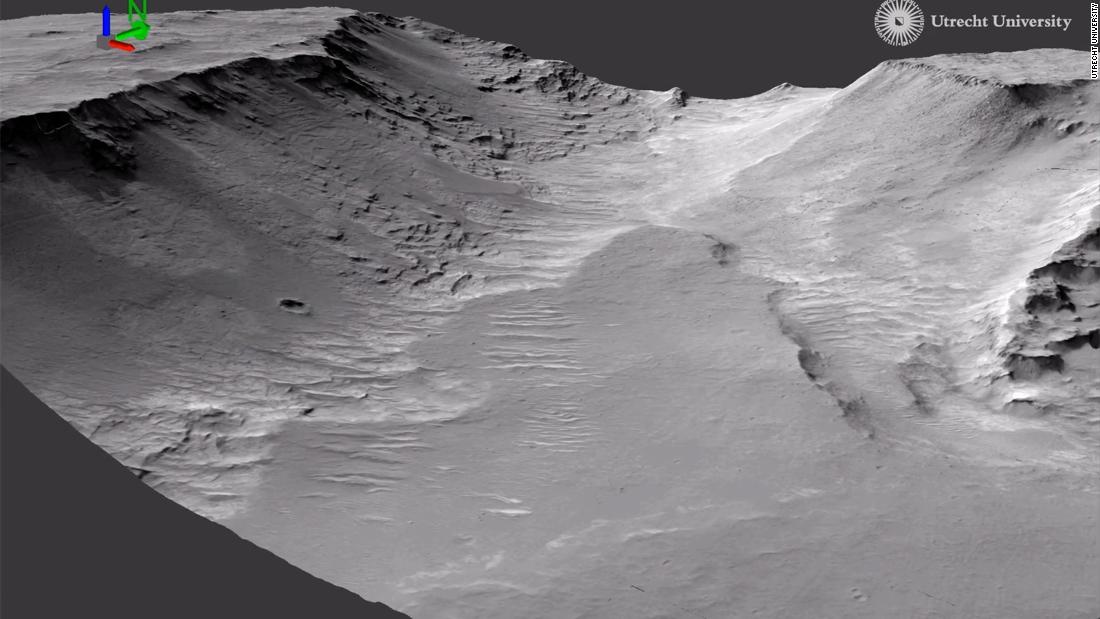
Here, ancient evidence of large lakes, rivers, deltas and canals can be seen in rocks. And the rocks reveal that Mars must have had a sustainable and significant presence of water in the past.
The researchers narrowed their focus to rocky cliffs, about 656 feet high – double the famous White Cliffs of Dover along the British coastline. There, rocks are 3.7 billion years old. Consisting of sediments that have accumulated over time, they are like rocks found on Earth formed by rivers.
The face of the open cliffs on Mars reveals “rivers that continually shift their moats, creating sandbanks, similar to the Rhine or rivers that you can find in Northern Italy,” the researchers said. their study.
“It’s not like reading a newspaper, but very high resolution imagery allows us to ‘read’ a rock as if you were standing very close to a cliff,” said Francesco Salese, study author, geologist at Utrecht University in the Netherlands and senior scientist at International Research School of Planetary Sciences in Italy, in a statement.
“Unfortunately we don’t have the ability to climb, to see finer scale details, but the striking similarities with sedimentary rocks on Earth leave little imagination.”
Sedimentary rocks record historical layers, and researchers can determine that this ancient river channel is about nine or 10 feet, or several meters deep.
Analyzing these layers on Mars can shed more light on its history, just as geologists use sedimentary layers on Earth to understand how our planet evolved over time and imagine what millions and billions of years ago were like.
“Now we have the technology to extend this methodology to another terrestrial planet, Mars, which holds ancient sedimentary rock records that extend even far into the past,” said William McMahon, study co-author and geologist at Utrecht University. , in a statement.
Of course the rocks they can learn from orbital data only contain a fraction of the time that water and sediment are moved in the region, the researchers said. Erosion is a strong force and can erase the layers of history on the stone. But other stones that act as time markers can be found or buried, they said.
But they say that they feel fortunate that they can learn the face of this particular cliff, which is tilted at the right angle so that the orbiter can simply capture it. That angle allows researchers to see what they call pileup patterns in rocky sediments and landscapes created by ancient rivers. They can choose where sediments change and hypothesize what creates different layers.
Based on the evidence they found in orbital data, the researchers believe that planetary water is driven by rainfall, like the rain we experience on Earth, and had a sustainable existence 3.7 billion years ago.
Previous studies of ancient water on Mars also showed that the water was prolonged, and this new research added to the camp while pointing to the fact that large amounts of water were part of the Martian landscape billions of years ago.
“A river that continues to flow like that will need an environment that is able to maintain large volumes of water for a broad period of time, and almost certainly requires a hydrological cycle driven by precipitation,” Salese said. “[This is] more in line with slower climate change, and less in line with disaster hydrological events. Such evidence, from long-lived landscapes, is very important in our search for ancient life on this planet. “









More Stories
Healing Streams Live Healing Services with Pastor Chris: Miracles Await this March 14th – 16th, 2025!
Essential Care for Hermann’s Tortoise: A Guide to Thriving Pets
Nail Decisions: Which is Better for You, Acrylic or Gel?